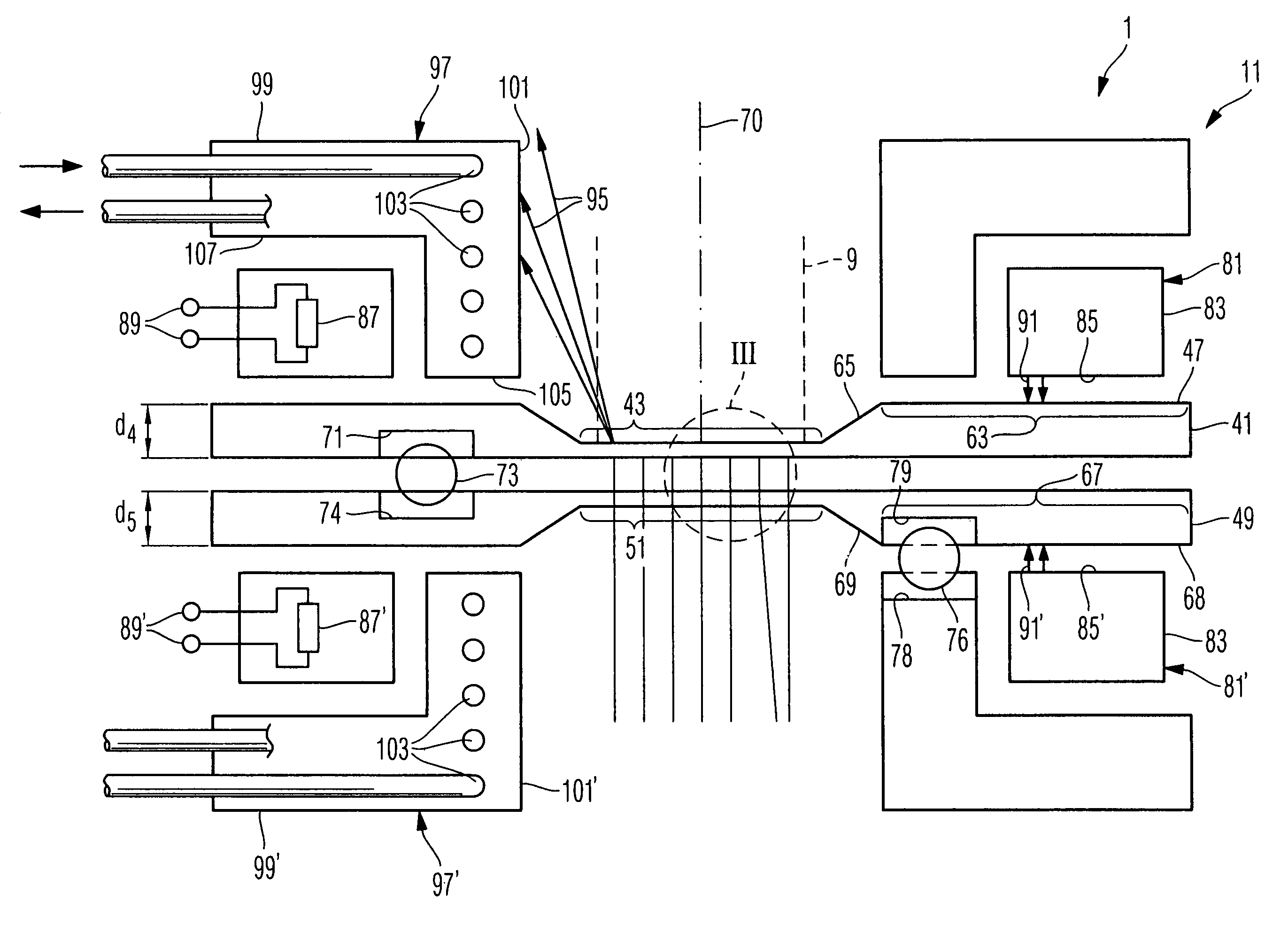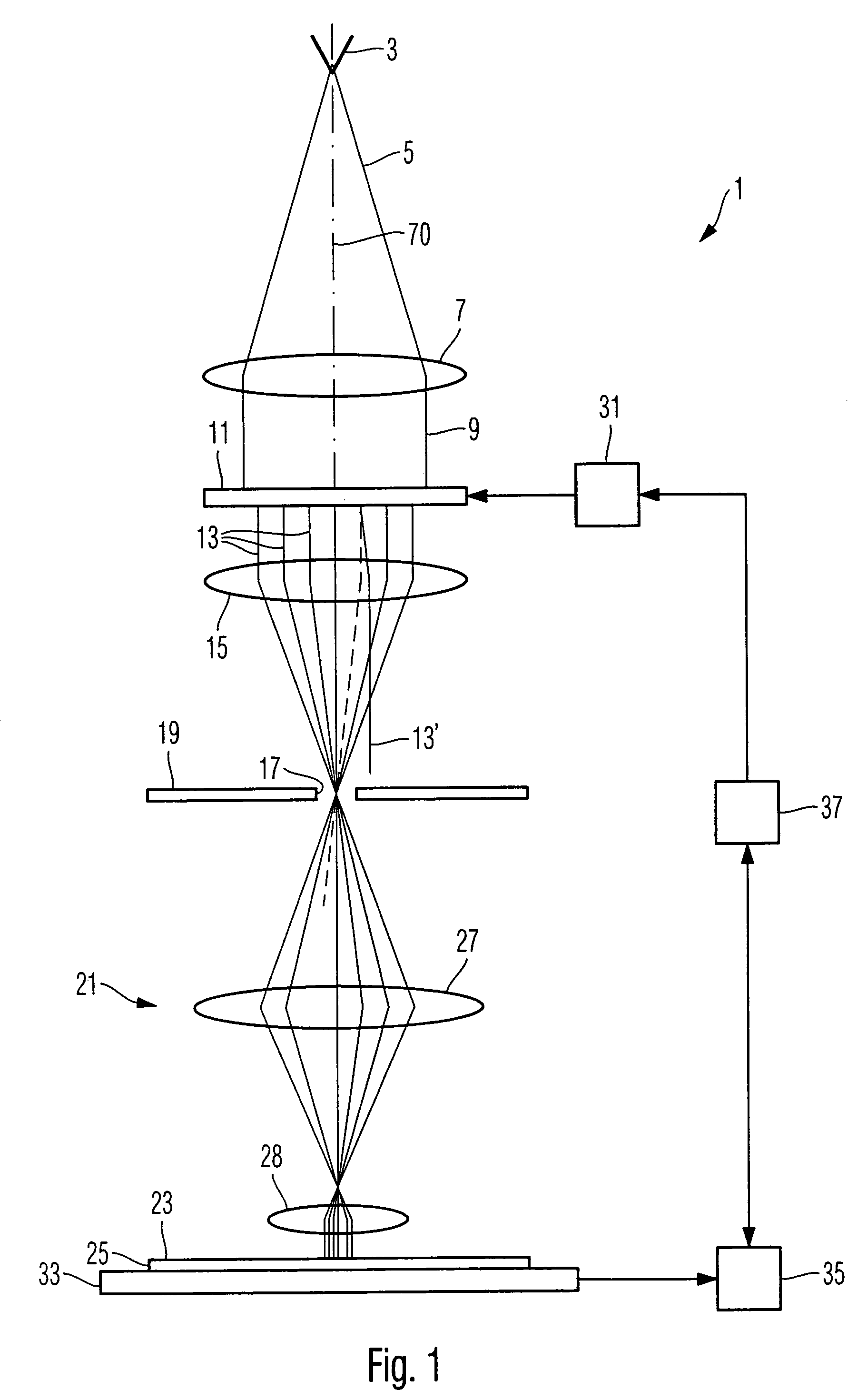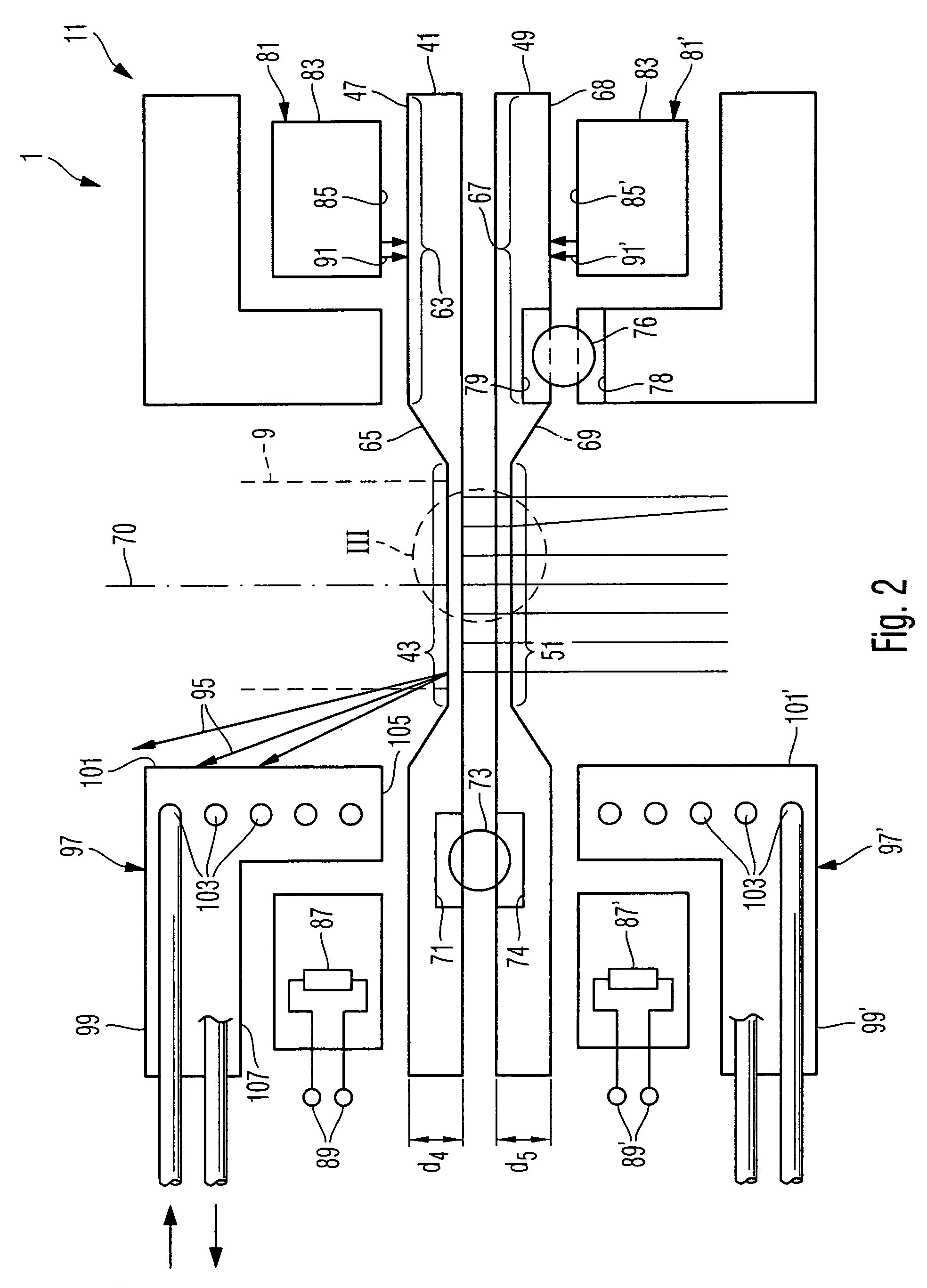Charged particle beam exposure system and beam manipulating arrangement
a beam exposure system and charge technology, applied in the field of charged particle beam exposure system and beam manipulating arrangement, can solve the problems of inhomogeneous deformation or bulging, distorted pattern of the arrangement of the plurality of apertures, and rise of the temperature of the central portion of the multi-aperture pla
- Summary
- Abstract
- Description
- Claims
- Application Information
AI Technical Summary
Benefits of technology
Problems solved by technology
Method used
Image
Examples
Embodiment Construction
[0039]In the exemplary embodiments described below, components that are alike in function and structure are designated as far as possible by alike reference numerals. Therefore, to understand the features of the individual components of a specific embodiment, the descriptions of other embodiments and of the summary of the invention should be referred to.
[0040]FIG. 1 illustrates a charged particle beam exposure system using a plurality of electron beams for exposing a pattern onto a substrate, such as a semiconductor wafer.
[0041]The system uses a deflector plate having a plurality of apertures and deflectors associated therewith for individually controlling the plurality of beams. Background information on such types of exposure systems and in particular methods of operations thereof and manufacturing of multi-aperture plates incorporated therein may be obtained from US 2003 / 0025088 A1, U.S. Pat. No. 5,262,341, U.S. Pat. No. 5,814,423 and U.S. Pat. No. 6,465,796 B1, the contents of w...
PUM
 Login to View More
Login to View More Abstract
Description
Claims
Application Information
 Login to View More
Login to View More - R&D
- Intellectual Property
- Life Sciences
- Materials
- Tech Scout
- Unparalleled Data Quality
- Higher Quality Content
- 60% Fewer Hallucinations
Browse by: Latest US Patents, China's latest patents, Technical Efficacy Thesaurus, Application Domain, Technology Topic, Popular Technical Reports.
© 2025 PatSnap. All rights reserved.Legal|Privacy policy|Modern Slavery Act Transparency Statement|Sitemap|About US| Contact US: help@patsnap.com



